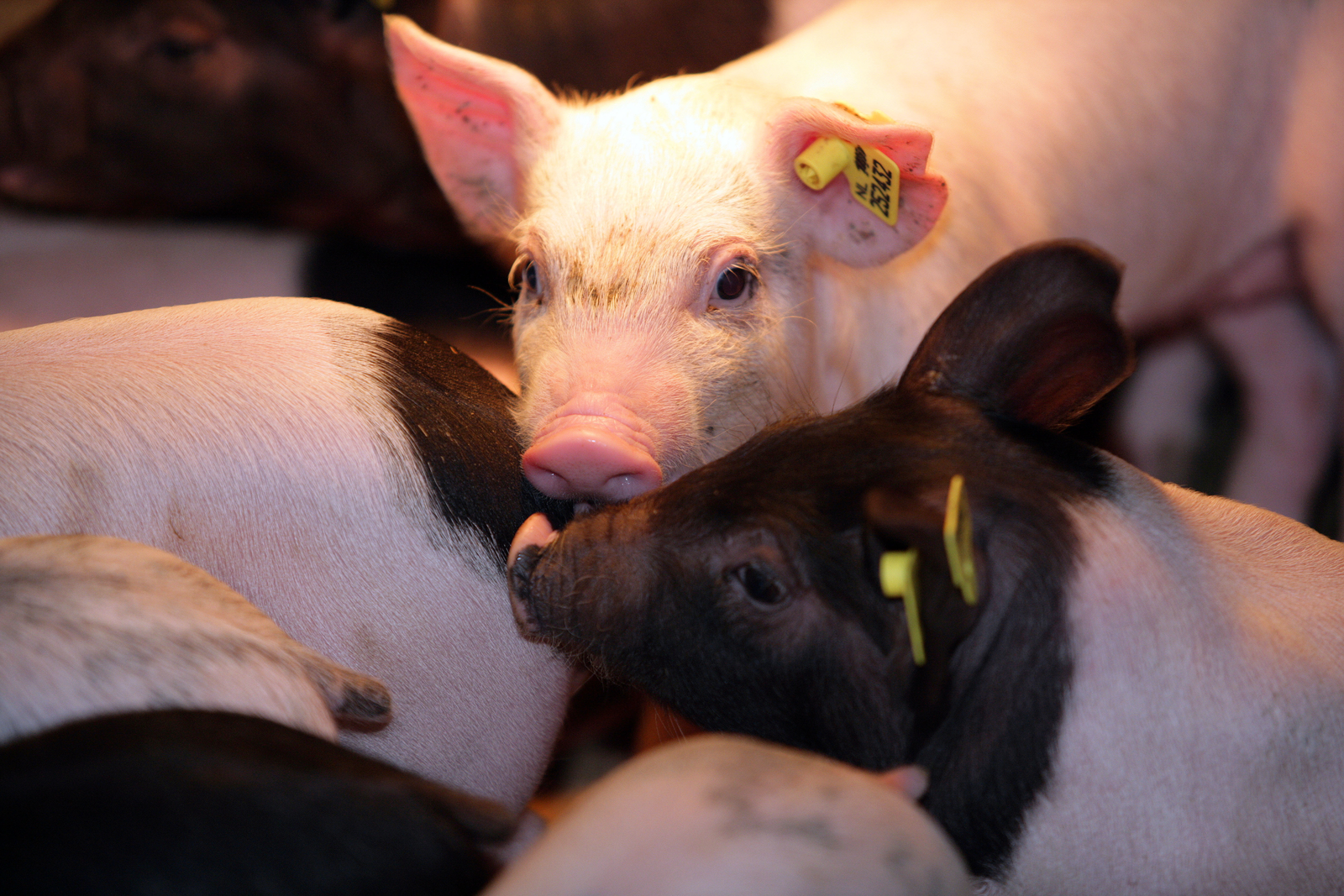Effect of feed on microbiota balance in piglets

A balanced gut microbiota helps the weaned piglet to stay healthier and maintain growth. In this study, the effects of probiotic, inulin and a combination of the two was analysed for their effects on the bacteria in the piglet’s gut.
It is already well-known that, after weaning, the gut microbiota diversity of piglets changes when the diet switches from liquid to solid. During this change, piglets are highly susceptible to enteric diseases such as post-weaning diarrhoea, which causes an overgrowth of enterotoxigenic Escherichia coli and a reduction of lactic acid bacteria (LAB) in the gastrointestinal (GI) tract. To support animal health and reduce the effect associated with weaning without using antibiotics, nutritionists often use feed supplements to stimulate and contribute to an optimal intestinal microbial balance.
Detection techniques have improved
Trials conducted to examine the effect of feed additives on the microbial ecology of the GI tract of newly weaned piglets have been performed before, such as by Mair et al in 2010. But not all the effects of certain ingredients on the microbiota could be detected with the cultivation-dependent methods used. The recognition of limitations in isolating bacteria resulted in the introduction of higher resolution molecular techniques for an improved analysis of complex microbial populations, such as the intestinal microbiota. Denaturing gradient gel electrophoresis (DGGE) enables the visualisation of the dominant microbial profile and diversity in a complex environment without prior knowledge of its composition. With real-time PCR, specific bacteria of interest can be quantified with high sensitivity and high-throughput 16S rRNA gene sequencing technologies provide the opportunity to identify members of the microbiota and to determine the relative abundance of GI microbes.
Experimental set-up
A feeding trial involving healthy weaned piglets was conducted for 28 days as described previously (Mair et al., 2010). It analysed the piglets’ general performance, intestinal microbiota and microbial metabolites using classical methods. Piglets with an average age of 26 days and a live weight of 9.2 kg were assigned to four groups: control, probiotic, inulin and synbiotic. The control group received the basal diet, the probiotic group the basal diet with a probiotic formulation (1×109 cfu/kg feed of mixture of E. faecium, L. salivarius, L. reuteri, B. thermophilum), the inulin group the basal diet with 0.4 % inulin (Frutafit® IQ, Sensus, Roosendaal, the Netherlands, average chain length 8-12 monomers), and the synbiotic group received both, the probiotic formulation and inulin. Genomic DNA was extracted from 250 mg of intestinal digesta and further used for analysing bacterial profiles.
Results are side-specific
Bacterial diversity assessed by DGGE and/or pyrosequencing was increased by inulin in all three gut locations and by the synbiotic in the caecum and colon (Figure 1). In contrast, the probiotic only affected the microbiota diversity in the ileum. Shifts in the DGGE microbiota profiles of the caecum and colon were detected for the probiotic and synbiotic fed animals, whereas inulin profiles were more similar to those of the control group. 16S rRNA gene pyrosequencing revealed that all three additives could reduce Escherichia species in each gut location, indicating a potential beneficial effect on the gut microbiota. An increase in the relative abundance of Clostridiaceae in the large intestine was found in the inulin group, as was an increase in the relative abundance of Enterococcaceae in the ileum of probiotic fed pigs.
Furthermore, real-time PCR results showed that the probiotic and synbiotic increased bifidobacterial numbers in the ileum, which was supported by sequencing results. To different extents, the probiotic and inulin changed the diversity and relative abundance of phylotypes, and the community profiles of the porcine microbiota. But alterations in the bacterial community were not uniform between gut locations, demonstrating the functionality of feed additives is site-specific. Gut sampling from various locations is therefore crucial when investigations aim to identify the composition of a healthy gut microbiota after its manipulation through feed additives.

Figute 1 – Bacterial diversity assessed by DGGE and/or pyrosequencing was increased by inulin in all three gut locations and by the synbiotic in the caecum and colon.
This article is an adaptation of the original article: ‘Impact of a probiotic, inulin, or their combination, on the piglets’ microbiota at different intestinal locations’, published in the Journal ‘Beneficial Microbes’.











